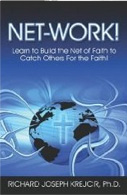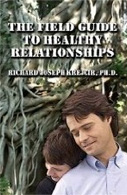Here are the L-I-G-H-T-S to the Word of God: Literal Interpretation, Illumination by the Holy Spirit, Grammatical Principles, Historical Context, Teaching Ministry, Scriptural Harmony. Principles of biblical interpretation ought to be determined before developing one's theology, but in practice the reverse is often true. Cultists in particular consistently read their deviant theologies into the biblical text instead of allowing the text to speak for itself. Faith teachers are also guilty of this practice, as I document in my book "Christianity in Crisis". In view of this growing problem, it would be productive to consider some of the primary principles of hermeneutics. Before you run off because of the formidable sound of this term, however, let me quickly point out that hermeneutics is simply a "fifty-cent" word that describes the science of biblical interpretation. The purpose of hermeneutics is to provide the student of Scripture with basic guidelines and rules for "rightly dividing the word of truth" (2 Tim. 2:15). To help ensure that you will remember these principles, I've developed the acronym L-I-G-H-T-S. Just remember that the science of biblical interpretation "LIGHTS" your path as you walk through the Word. Literal Interpretation The L in LIGHTS will remind you of the literal principle of biblical interpretation. In simple terms, this means that we are to interpret the Word of God just as we interpret other forms of communication - in its most obvious and literal sense. Most often, the biblical authors employed literal statements to communicate their ideas (such as when the apostle Paul said of Jesus, "By Him all things were created, both in the heavens and on earth" - Col. 1:16). And where the biblical writers express their ideas in literal statements, the interpreter must take those statements in a literal sense. In this way, the interpreter will grasp the intended meaning of the writer. Of course, this is not to deny that Scripture employs figures of speech. Indeed, the biblical writers often used figurative language to communicate truth in a graphic way. And, in most cases, the meaning of such language is clear from the context. When Jesus says He is "the door" (John 10:7), for example, it is obvious He is not saying He is composed of wood and hinges. Rather, He is the "way" to salvation. Illumination by the Holy Spirit The I in LIGHTS will remind you of the illumination of Scripture that can only come from the Spirit of God. First Corinthians 2:12 says: "We have not received the spirit of the world but the Spirit who is from God, that we may understand what God has freely given us." Because the author of Scripture - the Holy Spirit (2 Pet. 1:21). - resides within the child of God (1 Cor. 3:16), he or she is in a position to receive God's illumination (1 Cor. 2:9-11). And, indeed, the Spirit of truth not only provides insights that permeate the mind, but also provides illumination that can penetrate the heart. Grammatical Principles The G in LIGHTS will remind you that Scripture is to be interpreted in accordance with typical rules of grammar - including syntax and style. For this reason, it is important for the student of Scripture to have a basic understanding of grammatical principles. It is also helpful to have a basic grasp of the Greek and Hebrew languages. If you do not know Greek or Hebrew, however, don't panic. Today there are a host of eminently usable tools to aid you in gaining insights from the original languages of Scripture. Besides commentaries, there are "interlinear" translations that provide the Hebrew and Greek text of the Bible in parallel with the English text. As well, Strong's concordance has a number-coding system by which you can look up the Greek or Hebrew word (along with a full definition) behind each word in the English Bible. Moreover, there are dictionaries of Old and New Testament words that are keyed to Strong's concordance. Tools such as these make it easy for the layperson to obtain insights on the original Hebrew or Greek of the Bible without being fluent in these languages. Historical Context The H in LIGHTS will remind you that the Christian faith is historical and evidential (Luke 1:1-4). The biblical text is best understood when one is familiar with the customs, culture, and historical context of biblical times. Thankfully, there are a host of excellent Bible handbooks and commentaries to aid us in the process of understanding the people and places of the Bible. Teaching Ministry The T in LIGHTS will remind you that even though the illumination of Scripture ultimately comes through the ministry of the Holy Spirit, God has also provided the church with uniquely gifted human teachers (Eph. 4:11). Therefore, as we seek to rightly interpret God's Word (2 Tim. 2:15), we would do well to consult those whom God has uniquely gifted as teachers in the church (cf. Tit. 2:1-15). Of course, following the example of the Bereans (Acts 17:11), we should always make sure that what human teachers say is in line with Scripture (cf. 1 Thess. 5:21). Scriptural Harmony The S in LIGHTS will remind you of the principle of Scriptural harmony. Individual passages of Scripture must always be in harmony with Scripture as a whole. The biblical interpreter must keep in mind that all of Scripture - though communicated through various human instruments - has a single Author (God). And, of course, God does not contradict Himself. Studying the Bible is the noblest of all pursuits, and rightly understanding it, the highest of all goals. The six principles listed above can help you attain this goal. And as the science of biblical interpretation continually LIGHTS your path through Scripture, you will find yourself growing in your understanding of Him who is the Light of the world - Jesus Christ (John 8:12). |
CHRISTIAN SOLDIERS MINISTRIES was granted permission to post this article by the Christian Research Institute













